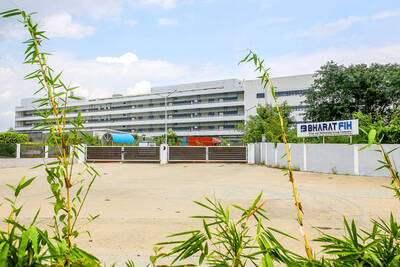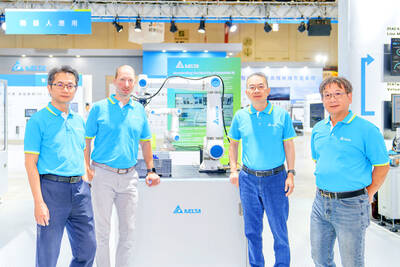Innolux Display Corp (群創光電), the world's second-biggest maker of liquid-crystal-display (LCD) monitors for PCs, yesterday said that it was seeking NT$25 billion (US$815 million) in syndicated bank loans to fund the construction of a new plant to match growing customer demand.
Innolux, an affiliate of Hon Hai Group (
Yesterday, the company said it planned to raise NT$25 billion in syndicated loans from unspecified banks to partly finance the construction of a sixth-generation (6G) factory.
"The monitor market is growing and our market share is also expanding," Innolux chief financial officer Thomas Hsu (許嘉成) said by telephone.
To improve its cost efficiency, Innolux aims to produce 40 percent of its LCD panels in its own plants, but the company predicts that current capacities will not be able to reach the long-term goal, Hsu said.
The company's current production could only supply a third of the total flat panels it needs by the end of the year, Hsu said.
Innolux planned to make 90,000 sheets of 1,500mm by 1,850mm flat panels a month in the second quarter of next year and then increase monthly production to 120,000 sheets by the end of 2010, Hsu said.
The new factory is designed for making monitor panels and TV panels, Hsu said.
In addition to the planned bank loans, Hsu said Innolux had NT$50 billion cash on hand and US$1.35 billion in proceeds from issuing global depository receipts in November to help finance the construction.
Innolux supplies PC monitors to major PC vendors including Acer Inc, Dell Inc, Hewlett Packard Co and Samsung Electronics Co, according to market researcher DisplaySearch.
Innolux seized a 17 percent share of the 43 million monitors made during the quarter, trailing behind TPV Technology Ltd (

SETBACK: Apple’s India iPhone push has been disrupted after Foxconn recalled hundreds of Chinese engineers, amid Beijing’s attempts to curb tech transfers Apple Inc assembly partner Hon Hai Precision Industry Co (鴻海精密), also known internationally as Foxconn Technology Group (富士康科技集團), has recalled about 300 Chinese engineers from a factory in India, the latest setback for the iPhone maker’s push to rapidly expand in the country. The extraction of Chinese workers from the factory of Yuzhan Technology (India) Private Ltd, a Hon Hai component unit, in southern Tamil Nadu state, is the second such move in a few months. The company has started flying in Taiwanese engineers to replace staff leaving, people familiar with the matter said, asking not to be named, as the

The prices of gasoline and diesel at domestic fuel stations are to rise NT$0.1 and NT$0.4 per liter this week respectively, after international crude oil prices rose last week, CPC Corp, Taiwan (台灣中油) and Formosa Petrochemical Corp (台塑石化) announced yesterday. Effective today, gasoline prices at CPC and Formosa stations are to rise to NT$27.3, NT$28.8 and NT$30.8 per liter for 92, 95 and 98-octane unleaded gasoline respectively, the companies said in separate statements. The price of premium diesel is to rise to NT$26.2 per liter at CPC stations and NT$26 at Formosa pumps, they said. The announcements came after international crude oil prices

STABLE DEMAND: Delta supplies US clients in the aerospace, defense and machinery segments, and expects second-half sales to be similar to the first half Delta Electronics Inc (台達電) expects its US automation business to remain steady in the second half, with no signs of weakening client demand. With demand from US clients remaining solid, its performance in the second half is expected to be similar to that of the first half, Andy Liu (劉佳容), general manager of the company’s industrial automation business group, said on the sidelines of the Taiwan Automation Intelligence and Robot Show in Taipei on Wednesday. The company earlier reported that revenue from its automation business grew 7 percent year-on-year to NT$27.22 billion (US$889.98 million) in the first half, accounting for 11 percent

A German company is putting used electric vehicle batteries to new use by stacking them into fridge-size units that homes and businesses can use to store their excess solar and wind energy. This week, the company Voltfang — which means “catching volts” — opened its first industrial site in Aachen, Germany, near the Belgian and Dutch borders. With about 100 staff, Voltfang says it is the biggest facility of its kind in Europe in the budding sector of refurbishing lithium-ion batteries. Its CEO David Oudsandji hopes it would help Europe’s biggest economy ween itself off fossil fuels and increasingly rely on climate-friendly renewables. While